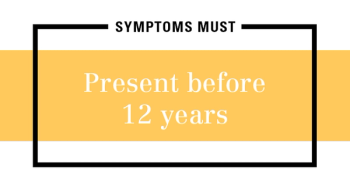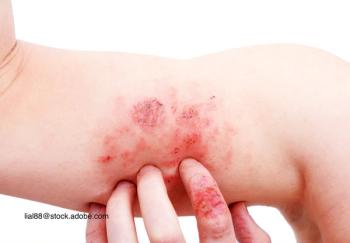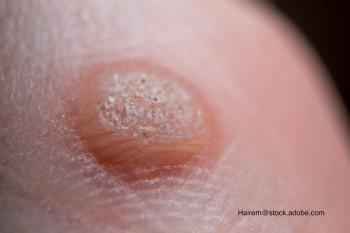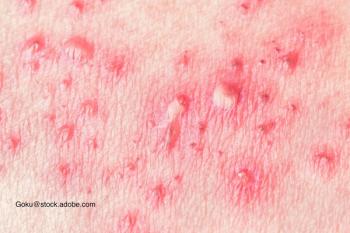
Here are the 10 most prevalent conditions that result in malpractice lawsuits.

Following the death of Michael G. Burke, MD, his long-time collaborator Marian Freedman and other colleagues shared their rememberances of Dr. Burke and the impact he had on pediatrics.

The AAP and ACIP have issued recommendations for the upcoming flu season, and they include the intranasal vaccine and a warning about watching carefully dosages on different brands of the vaccine.

A new study in JAMA Psychiatry provides another reason to recommend long-acting reversible contraceptives to adolescent female patients: oral contraceptives may increase the risk of depression.

Bronchodilator response may offer a signal to pediatricians on the severity of a patient’s asthma, and can be used to help manage the condition.

For children with chronic conditions like asthma in rural, underserved communities, school-based telehealth can help close the gap.

When determining whether a diagnosis of attention-deficit/hyperactivity disorder (ADHD) is the correct diagnosis, here are 5 important criteria to consider.

More children are being treated with hemodialysis for acute kidney injuries, but short-term mortality is increasing, too.

Previous studies in adults have shown that anxiety and depression can increase emergency department (ED) visits as a result for asthma. A new study in Pediatrics looks at whether the connection exists in pediatric patients.

Polysomnography has long been considered key to diagnosing obstructive sleep apnea (OSA) in children, but a new study in Pediatrics questions how helpful the technique is for determining whether a child will benefit from an adenotonsillectomy.

Food allergies are a hot topic on the playground, at schools, and in pediatric offices. Parents of children with eczema or atopic dermatitis (AD) often have a lot of questions regarding the connection between eczema, exposure to common food allergens, and the development of or exacerbation of AD. There are many of the complex questions that clinicians must answer when evaluating pediatric patients with AD.

For Contemporary Pediatrics, Dr Bobby Lazzara discusses a study published by Department of Health and Human Services that examined whether children enrolled with Medicaid who had an ADHD diagnosis received the recommended followup care.

When a baby is born with a disfiguring port wine stain, parents may be anxious for options to eliminate the lesion. Laser treatment is an effective option, and it is best begun early.

Computed tomography scans are often used when treating children for traumatic brain injury, but the exposure to ionizing radiation may give a clinician pause in cases that are extremely subtle. A new study published in Pediatrics looked at whether fast magnetic resonance imaging (MRI) scans, meaning motion-tolerant MRI sequences done without sedation) was accurate and feasible in young children.

Although progress has been made, racial and ethnic inequalities remain in medical care, but pediatricians can help to change this, as well as mitigate the damage that has already been done.

A teenager getting behind the wheel of a car is perhaps the greatest risk, but being an adolescent passenger in that car also carries a great risk. A recent C.S. Mott poll highlights the risks associated with being an adolescent passenger driven in a car by another adolescent.

I totally agree with Dr. Schuman’s perspective in his article that “it is inappropriate and irresponsible for pediatricians [and I include, PNPs] to encourage the use of cannabidiol (CBD) until more studies are available” to assure the safety and efficacy of CBD are clearly established in rigorous randomized controlled clinical trials (RCTs).

Recommendations for whether to test for and treat food allergy in the setting of atopic dermatitis have changed.

Elopement and wandering are serious problems for families of children with autism spectrum disorder (ASD). Here are 9 high-risk situations when parents and caregivers need to be more mindful.

Pediatricians should consider family history of atopic dermatitis (AD) in both parents to help frame the risk for their offspring.

The American Academy of Pediatrics (AAP) and the American College of Obstetricians and Gynecologists (ACOG) have released updated guidelines on the management of Group B Streptococcus (GBS) infections in both mothers and babies.

Healthy Eating Research has issued a consensus recommendation for healthy beverages for children aged young than 5 years. The statement was created via a collaboration between American Academy of Pediatric Dentistry, American Academy of Pediatrics, Academy of Nutrition and Dietetics, and American Heart Association.

For diseases such as atopic dermatitis (AD) that require complex care, colorful infographics take the guesswork out of patient education.

Many treatments for warts are destructive and painful, and are more likely to cause complications than the warts. A pediatric dermatologist advises what to do-or not do-for common warts.

There is now compelling evidence that the early introduction of allergenic foods to infants might very well prevent the development of food allergy.


I have been asked by parents several time regarding the use of a cannabidiol (CBD) product to calm their aggressive autistic children when other medications have not been effective. It would be tempting to recommend CBD/THC products to help parents in this regard, but my concerns about safety as well as efficacy have dissuaded me from doing so.

Oregon has passed several new laws aimed at suicide prevention, with 2 of those specifically targeting students by offering excused mental health days and requiring school districts to develop comprehensive suicide prevention plans for at-risk students.

The varicella vaccine may have been helpful in reducing the incidence of herpes zoster. A recent study published in Pediatrics confirms what other studies had previously reported.

A healthy 5-week-old girl presents for evaluation of rapidly growing, flat-topped red papules on the left side of her face.